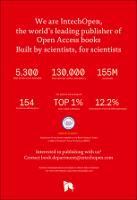Chapter Managing Heat Transfer Issues in Thermoelectric Microgenerators
Author(s)
Marc, Salleras
Luis, Fonseca
Inci, Donmez-Noyan
Marc, Dolcet
Joaquin, Santander
Denise, Estrada-Wiese
Jose-Manuel, Sojo
Gerard, Gadea
Alex, Morata
Albert, Tarancon
Language
EnglishAbstract
This chapter deals with heat transfer challenges in the microdomain. It focuses on practical issues regarding this matter when attempting the fabrication of small footprint thermoelectric generators (μTEGs). Thermoelectric devices are designed to bridge a heat source (e.g. hot surface) and a heat sink (e.g. ambient) assuring that a significant fraction of the available temperature difference is captured across the active thermoelectric materials. Coexistence of those contrasted temperatures in small devices is challenging. It requires careful decisions about the geometry and the intrinsic thermal properties of the materials involved. The geometrical challenges lead to micromachined architectures, which silicon technologies provide in a controlled way, but leading to fragile structures, too. In addition, extracting heat from small systems is problematic because of the high thermal resistance associated to heat exchanged by natural convection between the surrounding air and small bare surfaces. Forced convection or the application of a cold finger clearly shows the usefulness of assembling a heat exchanger in a way that is effective and compliant with the mechanical constraints of micromachined devices. Simulations and characterization of fabricated structures illustrate the effectiveness of this element integration and its impact on the trade-off between electrical and thermal behavior of the active materials in device performance.
Keywords
thermoelectricity, silicon technology, micromachining, silicon nanowires, heat exchangersDOI
10.5772/intechopen.96246Publisher
InTechOpenPublisher website
https://www.intechopen.com/Publication date and place
2021Classification
Engineering: general


 Download
Download